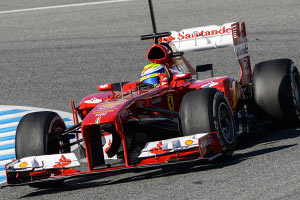Raptor22 wrote:think of the bottom of the car as a converging diverging thermodynamic nozzle. the more mass y9ou get through it, the higher the expansion ratio the more efficient the nozzle and therefore the lower th pressure at the throat.
If the throat is the "kink" line where the flat botom ends and thre diffuser begins the higher the mass through there, the lower the pressure the higher the downforce from the underbody.
There is a trade off. More mass flow is good. But only if you can maintain the expansion ratio.
If the expansion is constant more mass flow could be achived at the price of less expansion. Depending on how the relation between mass flow and expansion ratio is you could have a net loss or gain.
Assuming that the overall expansion size is limited by diffuser regulation more mass flow under the ffloor will only be good if you can achieve more airflow over the floor as well, improving expansion ratio.
Therefore you want more air under the car but you will want to use most of it over the diffuser and only a small fraction under it to increase mass flow.




